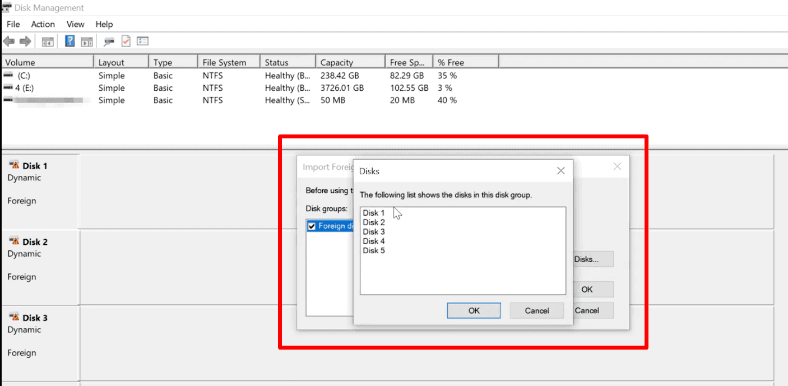18
Recover RAID Volumes in Windows Storage Spaces: Parity, Striping, Mirror, Composite
What if your hardware RAID 5 is down (and it was built in Windows Storage Spaces on Windows Server 2019)? Have you reinstalled the operating system, and now one or several disks don’t work, or the whole disk array is inaccessible? In today’s article, we’ll tell you how to get it back to normal again and recover your data.

Windows Server features an integrated technology to let you create a hardware RAID system and protect your files from accidental loss. This function is used to keep your data intact in case one or several disks fail, depending on the array configuration. Unfortunately, issues related to data loss in Windows Server systems do not always boil down to a mere disk failure: other possible causes may include software errors, incorrect settings, damaged metadata, accidental formatting or removing files and so on. All these things may cause a loss of important information, and leave the poor user wondering how to extract or recover files from such a faulty array.

To have your data back, you have to use specialized data recovery software that supports this specific RAID type. Hetman RAID Recovery supports almost all known sorts of RAID systems, and it will help you recover any lost files without effort. It works perfectly with all popular file systems, fixing errors in the logical structure of hard disks and displaying disk contents.
YouTube:
Errors in the work of the operating system (like those you may encounter during the update process) can cause a critical error, which may leave your system stranded and unable to boot again. If that’s the case, the easiest way out is to reinstall your operating system. But what should you do with the RAID 5 system and all the information that is still inside it?
After the operating system is reinstalled, it may have issues in recognizing the disks, and display them in the Disk Management as ”foreign”.

Try importing them first. Right-click on the disk icon, then choose Import foreign disks.

Specify the group and click OK.

In the next window, the system will list the volumes it has found on the disks, so click OK to confirm it. After that, all disks will appear in File Explorer.

There could be situations when the import operation fails and some arrays remain inaccessible – just like this RAID 5 system.

One more scenario is when a hardware failure or another emergency damaged a part of metadata, or there is a never-ending process of resynching which makes the disk unavailable for read and write operations. Similar things occur when you accidentally remove a part of the data or format the disk.
This is when Hetman RAID Recovery comes to the rescue. It will scan the selected disks automatically and display all the data it can identify. Now that the program displays correct array properties, Al you have to do is to scan the logical volume and recover the information.

If one or several disks are damaged and Hetman RAID Recovery is unable to identify accurately your RAID 5 properties, there is the integrated RAID Constructor to help you.

Select Manual Mode – click “Next,” and specify the properties used when creating this RAID 5. Give the array type, its size, order of blocks, and select the drives that were included into the array, and make sure you specify the order in which they were arranged.

In fact, the maximal number of disks that can be missing is determined by the types of resiliency supported by Storage Spaces RAID, and they are as follows:
*Simple resiliency (stripe) require all disks to be available,
*Two-way mirror and parity types can compensate the absence of one disk,
*Three-way mirror types can keep on working even if they lose two disks at the same time.
See the full article with all additional video tutorials. Also visit our Youtube channel, there are over 400 video tutorials.
18
